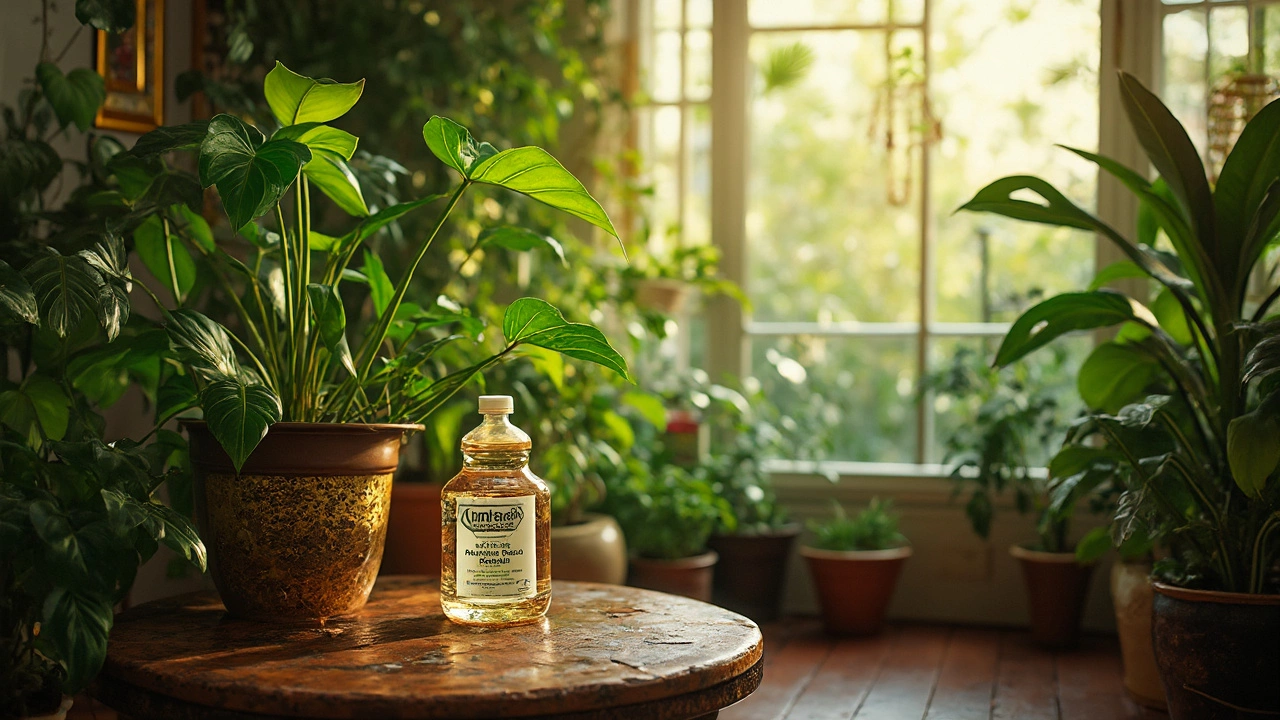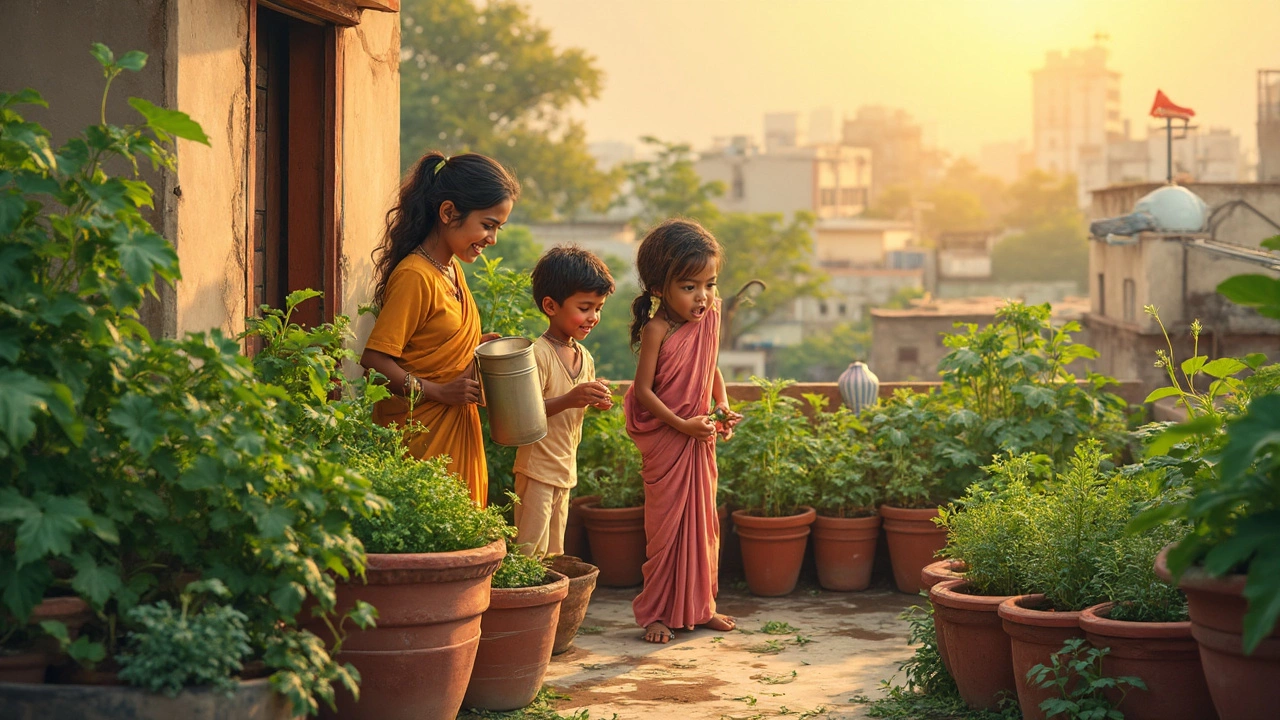Where Not to Plant Bougainvillea in India to Ensure Vibrant Growth
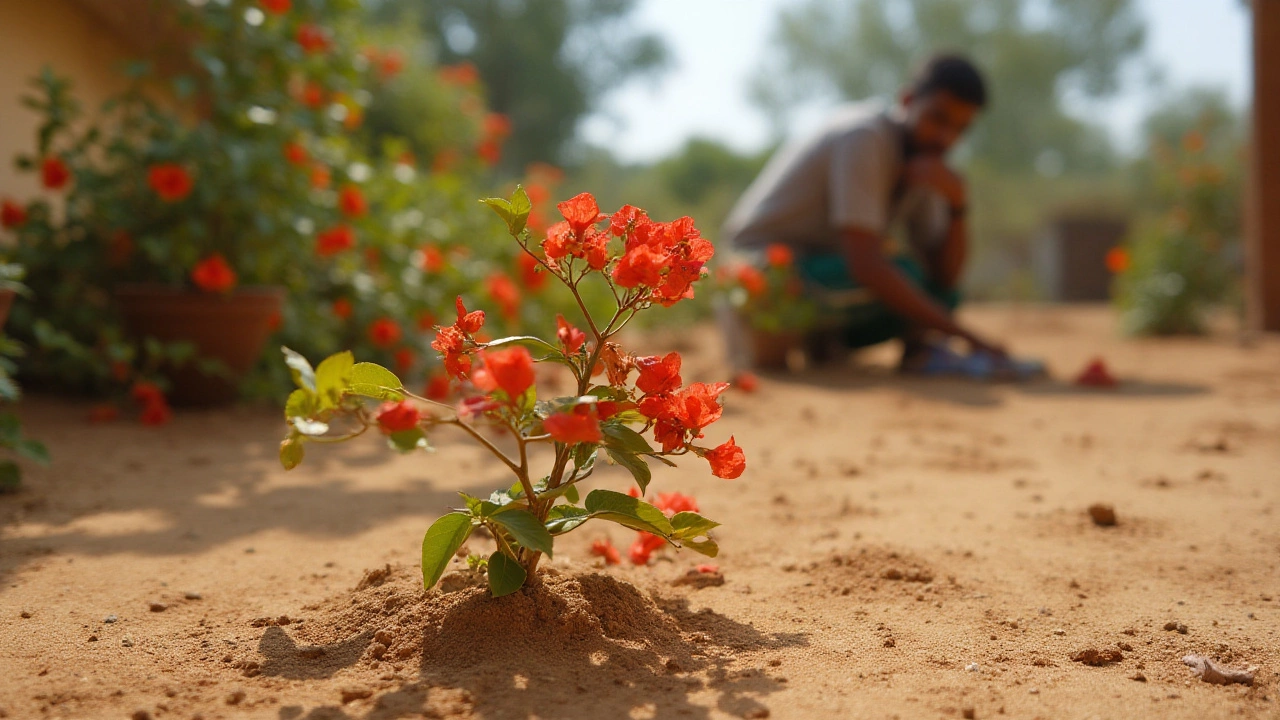
Bougainvillea is renowned for its breathtaking beauty and vibrant hues, turning any garden into a dazzling spectacle. Yet, achieving this splendor requires more than admiration—it calls for understanding where these plants thrive best and, just as importantly, where they struggle.
In the diverse climates of India, not every region is suited for their growth. These lovely plants flourish in sun-drenched environments, struggling in locations that deprive them of ample light and warmth. By steering clear of areas that do not meet their needs, gardeners can ensure that their bougainvillea will not only survive but thrive, offering their signature dazzling display.
- Understanding Bougainvillea's Needs
- The Unsuitable Climates
- Poor Soil Conditions
- Shady and Overcrowded Areas
Understanding Bougainvillea's Needs
To cultivate the vibrant charm of bougainvillea, understanding its unique needs is paramount. These beguiling plants, with their cascading bursts of color, thrive best under specific conditions. Native to South America, bougainvillea have adapted to a climate that provides abundant sunlight. Thus, one of their primary needs is relentless sun exposure, ideally for at least five to six hours each day. Sunlight not only powers the plant through photosynthesis but also aids in the production of their brilliant colors, which are not the flower petals but bracts—a notable botanical twist.
Heat and warmth also play vital roles. Bougainvillea flourish in temperatures ranging between 60 to 100 degrees Fahrenheit. In environments where temperatures dip below this range, they tend to become dormant or, worse, lose their vigor. Cold winters can be harsh, particularly in Northern India, where frosty conditions can damage or even kill these delicate plants. Protecting them from harsh winds and frost is crucial, especially in hilly regions.
Choosing the right soil is another significant piece of the growing puzzle. Bougainvillea plants demand well-draining soil to avoid waterlogged conditions that their roots cannot tolerate. A sandy or loamy soil type, enriched with organic matter, offers an ideal base for these plants. Overwatering can quickly lead to root rot, a condition these plants despise. It's a delicate balance—keeping them moist but not soggy. Battling the urge to overwater is a lesson many gardeners learn the hard way. A smart approach is to water deeply but infrequently, allowing soil to dry out between waterings.
The Role of Pruning and Care
Pruning is another practice vital to understanding bougainvillea care. Regularly trimming helps maintain its desired shape, encouraging bushier growth and more flowers, while also keeping it healthy by removing dead or crowded branches. This should be done with caution as over-pruning can stress the plant. Frances Graham, a well-known horticulturist, famously remarked,'Pruning is like giving a haircut and reshaping; get it just right and watch the art form it creates.'Prune after blooming to shape bougainvillea, while also ensuring sunlight penetrates the inner branches.
A balanced feeding regimen can also synergize with other efforts. Bougainvillea benefit from a fertilizer rich in nitrogen, phosphorus, and potassium, applied every four to six weeks during their growing season. However, avoid over-fertilizing as this can lead to more leaves and fewer blooms. Observing these needs carefully, these plants become a gardener's delight, painting landscapes with vivid splashes of color that stand the test of heat and time.
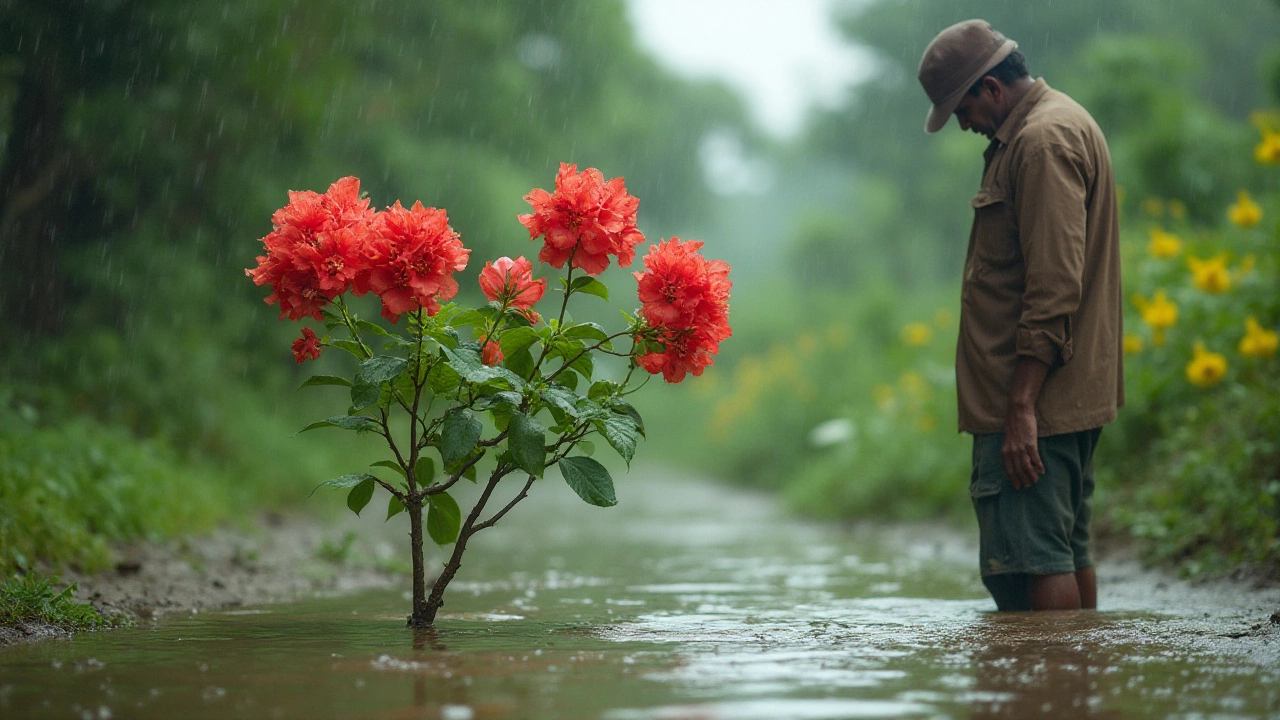
The Unsuitable Climates
When thinking about planting bougainvillea in India, understanding the climate is critical. Bougainvillea thrives in warm, sunny environments found predominantly in tropical and sub-tropical regions. However, several climates across India do not provide such conditions and are deemed unsuitable for this vibrant plant. Starting with the northern mountainous regions, areas like Himachal Pradesh and Jammu & Kashmir have severe winters, which can be detrimental to bougainvillea. These plants are not frost-tolerant, and cold temperatures can lead to their demise.
Another region to consider is the coastal areas continually exposed to heavy rainfall, such as the monsoon-drenched strips of the western ghats. Here, excessive rain not only waterlogs the soil but can also lead to root rot, impairing growth. Long durations of wet weather can strip nutrients from the soil, weakening the plant. It's important to note that while bougainvillea loves sun, it dislikes excessive moisture. If you've ever asked why your bougainvillea isn't blooming, perhaps it's exhausted from defending itself against relentless rain.
In plains of North India, the scorching heat of summer can actually be inviting for these plants, but don't be fooled—excessive humidity accompanied by persistent rainfall in places like Uttar Pradesh can again spell disaster. Bougainvilleas prefer a dry warmth. Introducing it to excessively humid environs stresses the plant, often leading to fungal diseases. A well-known gardener, Anita Deshpande, once mentioned,
"Bougainvillea is like a sun-loving, rain-fearing diva—a testament to nature's complex beauty."
To help you visualize climates conducive for bougainvillea, consider the southern regions such as Tamil Nadu, where there's ample sun for most of the year. These conditions are ideal, showcasing their full glory. Table 1 below highlights specific features of different Indian regions affecting bougainvillea growth negatively:
| Region | Climate Features | Impact on Bougainvillea |
|---|---|---|
| Northern Mountains | Cold, Frost | Prevents growth |
| Western Coastal Areas | High Rainfall | Root rot, waterlogging |
| Northern Plains | High Humidity | Fungal issues |
Planting bougainvillea involves more than inserting a cutting into the ground—it's about matching the environment to its needs. Understanding these unsuitable areas can prevent common mistakes and help cultivate healthy and flourishing plants. Ultimately, keeping an eye on climate will contribute significantly to the success of your flower gardening efforts.
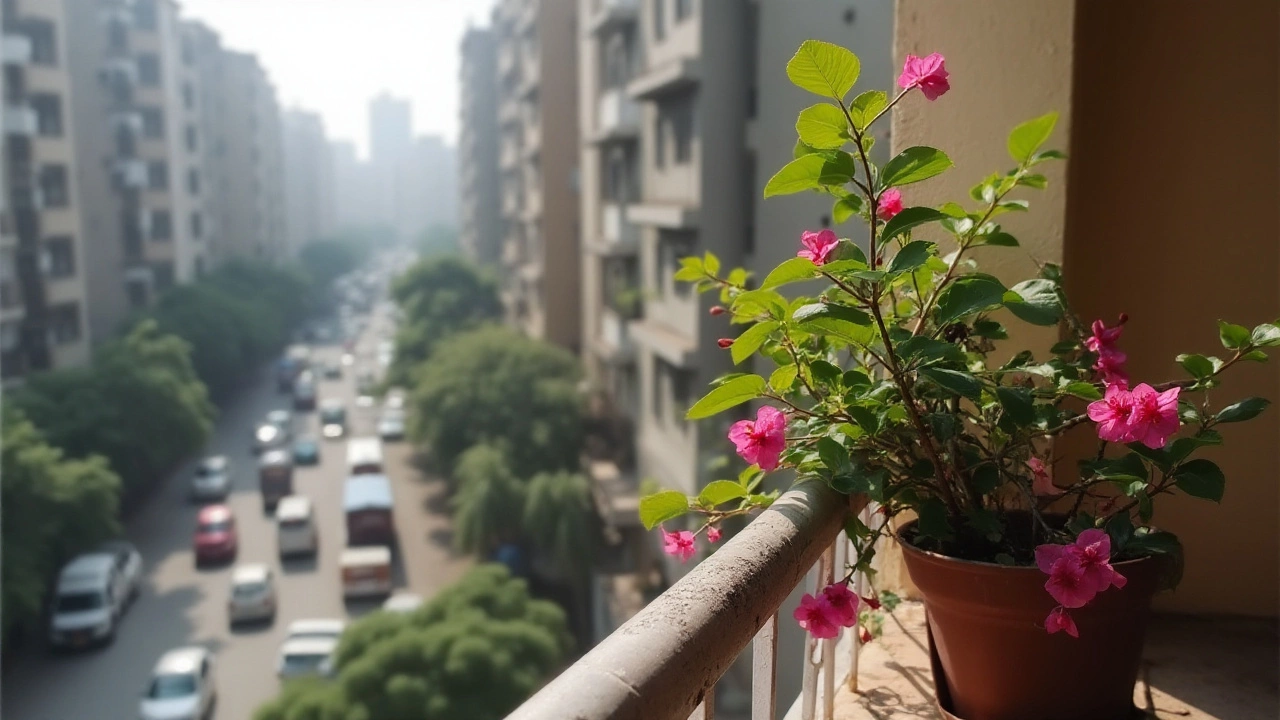
Poor Soil Conditions
Bougainvillea, with its radiant colors and delicate blooms, can become quite particular about its soil requirements. This hardy plant, though forgiving in some aspects, refuses to compromise on soil drainage and structure. Unlike its carefree appearance, bougainvillea demands attention to its roots—a less-than-ideal soil can stunt its growth, dampening those colors we've come to love.
The most crucial element for healthy bougainvillea growth is effective drainage. This plant detests sitting in waterlogged soil as it leads to root rot—a common issue when poor drainage is present. The roots need to breathe, and waterlogged conditions deprive them of necessary oxygen. Therefore, gardeners must steer clear of heavy clay soils known for retaining water. Instead, a sandy or loamy mix, perhaps amended with a bit of gravel or sand, would serve the plant best, ensuring that excess water drains away.
A pH level between 5.5 and 6.5 serves bougainvillea well, making it mildly acidic to neutral. This requirement is key, as soil with an inappropriate pH can hinder nutrient absorption, ultimately affecting the plant's health. In regions where the soil is naturally alkaline, adjusting the pH using organic materials like sphagnum peat moss might just do the trick. While some experts suggest sulfur or acidifying fertilizers, it's always wise to test the soil first, ensuring that interventions align with what's truly needed.
"The key to thriving bougainvillea lies in its roots, quite literally," notes renowned horticulturist Dr. Maya Banerjee. "Ignoring soil conditions essentially results in ignoring the plant's basic needs." She emphasizes understanding local soil types as a foundational step for any gardener aspiring for success with bougainvillea.
It's not just about soil composition; soil temperature plays a role too. Bougainvilleas love warmth. Cold or overly damp soils can shock their systems, especially in cooler seasons. Planting in raised beds or pots can mitigate this issue, allowing the soil to warm up more quickly. For those keen on container gardening, a mixed medium specifically designed for succulents or cacti might be ideal, as these blends typically offer excellent drainage and the requisite warmth.
Beyond these basic requirements, it's important to consider the soil's nutrient content. While bougainvillea doesn't demand a highly fertile ground, a basic nutrient presence supports its health and flowering capacity. Occasional applications of a balanced fertilizer or one slightly higher in phosphorus can encourage bloom production without overwhelming the plant with excessive nitrogen, which could lead to more leaves than flowers.
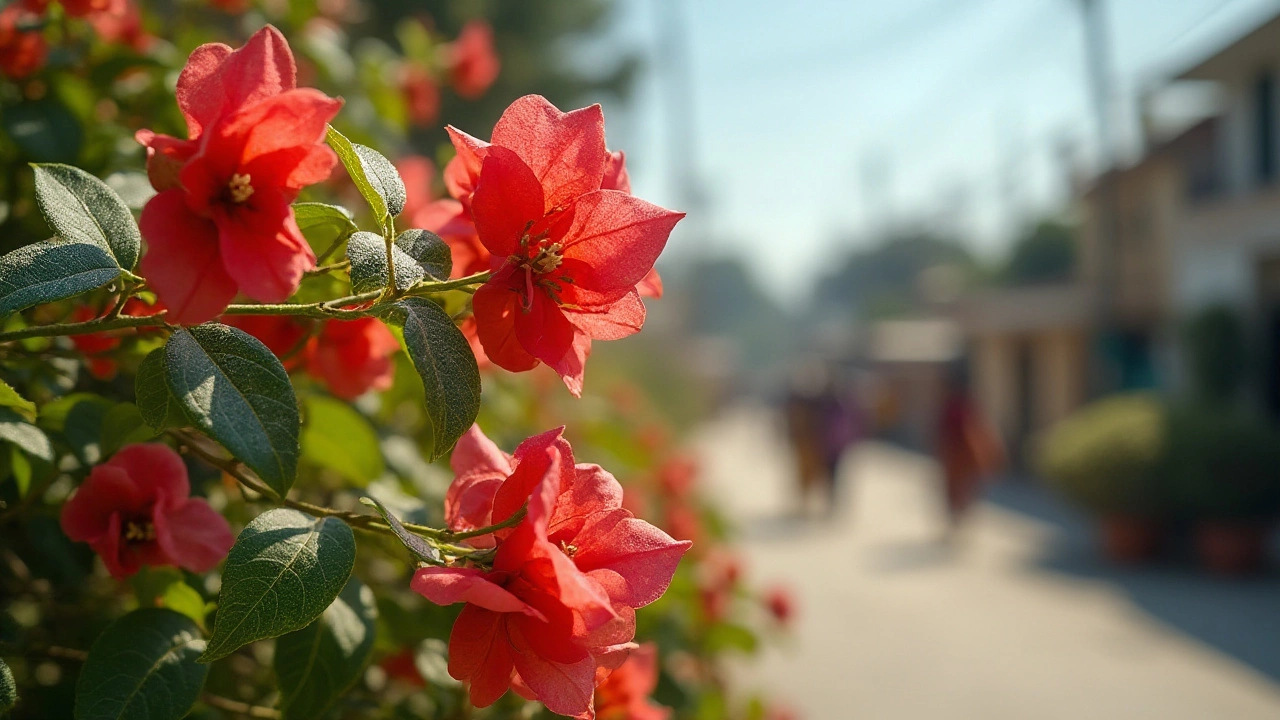
Shady and Overcrowded Areas
When considering the flourishing growth of bougainvillea, their love for a sun-drenched environment cannot be understated. These spirited plants yearn for the ample warmth offered by the sunlight, which supports their vibrant blooms and robust growth. Placing them in areas rich in shadow, whether it's the deep shade cast by towering trees or the gloomy corners of tall buildings, can stymie their development and reduce them to a pale version of their potential grandeur. It's not just the lack of sunlight that hinders, but also the prolonged moistness that shade brings, fostering conditions ripe for root rot, a notorious bane for many gardeners.
The hustle and bustle of overcrowded environments further complicate the growth of these plants. In an overcrowded space, bougainvillea competes with other flora for vital nutrients and water, often leaving it at a disadvantage. This competitive plant battle not only stunts growth but also leaves it more vulnerable to pests and diseases, especially in a climate as varied as India's. The dense clusters can also stifle air circulation, creating a breeding ground for fungal infections and pests which thrive in such confined environments.
The Importance of Spacing
Imagine the stark contrast of positioning bougainvillea against crested companions like palms or plumerias where they have space to breathe, allowing their branches to sprawl and twine. Proper spacing permits sunlight to reach every part of the plant equally and ensures that each leaf and bloom can bask in the glow that it so craves and requires.Beth Chatto, a celebrated gardener, famously said, "If it relies upon you to remember the watering or shading, you're probably always going to struggle.” This perfectly summarizes the saga of growing bougainvillea in shady, overcrowded spots where natural conditions are far from ideal.
Gardeners aiming for success with their bougainvillea should map out their planting strategy with space in mind. Provide at least a few feet between these beauties and other plants, and avoid letting other foliage overshadow them. Opt for walls or fences with a southern exposure where they can bask in all-day sunlight; however, be mindful of regions with scorching midday heat which might occasionally necessitate light shade for protection.
In conclusion, the shaded nooks and crannies, though appealing for their quaintness, are no paradise for the sun-thirsty nature of bougainvillea. Open, sunny vistas are their stage, one where they can perform uninhibited and bring joy with their vibrant displays. Proper awareness and thoughtful planning can transform your garden into a thriving patch of color and vitality.


